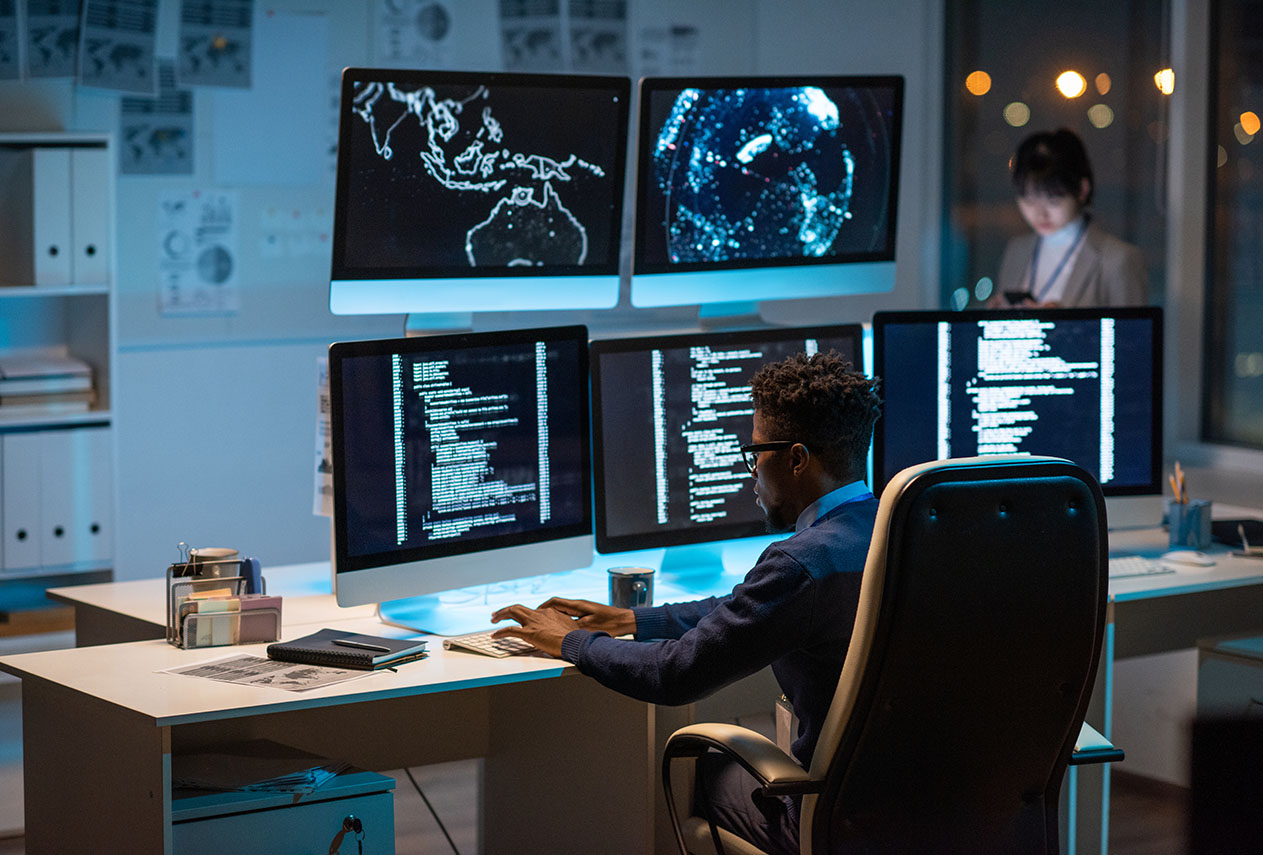Stay Up to Date on the Latest Phishing Techniques
Phishing is one of the most common methods used by cybercriminals to steal personal information and financial data. Be sure to check for new updates on phishing techniques, so you can be sure you’re not falling victim to any attempts.
There are lots of different ways to stay informed on the latest news, such as subscribing to industry publications, attending conferences and seminars, or joining online security forums. Additionally, your company’s IT team may also be able to provide you with additional resources.
Use a Secure Connection when Accessing Sensitive Data
It is important for remote workers to be aware of how and where they are connecting to the internet. Using an unsecured network or public Wi-Fi puts you at risk of having your data intercepted, so it’s important that you use a secure connection when accessing sensitive data.
You can do this by using a virtual private network (VPN) which encrypts the data you send and receive, ensuring that it is protected from unauthorised access. You should also consider investing in a secure router with additional features such as firewalls, antivirus software, and website blockers.

Utilize Two-factor Authentication (2FA)
Two-factor authentication adds an extra layer of security to your accounts. Rather than just using a username and password, it requires you to also input a one-time code sent directly to your phone or email address. This prevents hackers from accessing your data even if they have obtained the correct login credentials.
Make sure you enable 2FA on all accounts that offer it, such as email, social media or banking apps. Additionally, you should regularly check that your accounts are linked to the correct phone number or email address, so the 2FA codes aren’t sent to an incorrect recipient.
Use a Password Manager
With so many passwords to remember, it’s easy for remote workers to become overwhelmed. A password manager is an invaluable tool which securely stores all of your passwords and other sensitive information in one place. It also offers features such as auto-fill, so you don’t have to waste time typing out the same passwords over and over again.
When choosing a password manager, make sure it has strong encryption protocols and two-factor authentication. Additionally, if you’re using multiple devices, be sure to sync your password manager across them all so you can access the information wherever you are.
Be Mindful of Public Discussions
When working remotely, it’s easy to forget that others may be listening in on your conversations. Be mindful of what you say when communicating over public networks such as Slack, Zoom or Google Hangouts. Even if your team is using encryption technology, it’s still important to be aware that sensitive information should never be discussed in a public setting.
Additionally, double-check that you are not sharing any confidential information on social media.
Utilize Disk Encryption

Disk encryption is a useful tool which prevents unauthorized access to your data in the event of a security breach. It works by encrypting all of your files and folders so that they can’t be read without the correct password or key.
It’s important to remember that disk encryption isn’t foolproof, so it’s important to also take all of the other measures mentioned above as well.
Additionally, if you are upgrading your systems and need to dispose of the old disks, don’t just toss them in the trash, make sure to do it properly through reputable hard drive destruction services. That way, no one will be able to get to your data.
Keep Your Devices Updated
It’s essential to make sure that all of your devices are kept up-to-date with the latest security patches. Implementing Zero-Touch Deployment can streamline this process by ensuring that devices are automatically configured with the necessary updates and security settings, reducing manual intervention. If there is a vulnerability which could be exploited, installing the latest updates will help protect against these threats.
Regularly check for updates and always install them as soon as they become available. Additionally, make sure to always use reputable antivirus software and regularly scan your systems for any malicious files or programs.
Lastly, use MDM features to manage device security centrally, alongside regular updates and antivirus scans, for comprehensive protection against threats.
Monitor Your Credit Report
It’s important to keep an eye on your credit report, as criminals may attempt to open new accounts in your name if they gain access to your personal information. Set up credit monitoring and regularly check your accounts for any suspicious activity.
It’s also a good idea to freeze your credit reports when you’re not actively using it, as this will make it harder for criminals to open new accounts in your name. Additionally, never share personal information such as social security numbers or passwords with anyone unless absolutely necessary.
Don’t Store Passwords in Plain Text
Plain text files are an easy target for hackers, so it’s important to never store any of your passwords in these documents. If you need to keep track of your passwords, use a password manager instead.
Additionally, always use unique passwords for each website or application. If a hacker manages to gain access to one password, they won’t have the keys to all of your accounts.
Implement an Incident Response Plan

Even if you take all of the necessary precautions, there’s still a chance that something could go wrong. To prepare for this situation, it’s important to have an incident response plan in place so that you know what to do if a security breach occurs.
This should include steps such as notifying the necessary personnel, informing customers and other stakeholders, and conducting a post-incident review. It’s also important to regularly review and update your incident response plan as needed.
Conclusion
Follow these cybersecurity tips for remote workers in 2022, and you’ll be well on your way to staying secure while working remotely. Keep your devices up-to-date, don’t store passwords in plain text, and always use strong passwords. Additionally, make sure to monitor your credit reports and implement an incident response plan in case of a security breach. By taking these steps, you can ensure that your remote work remains safe and secure.


